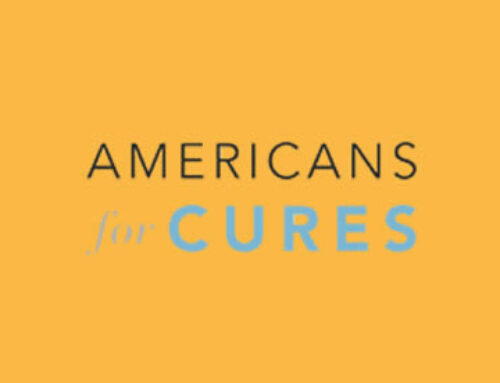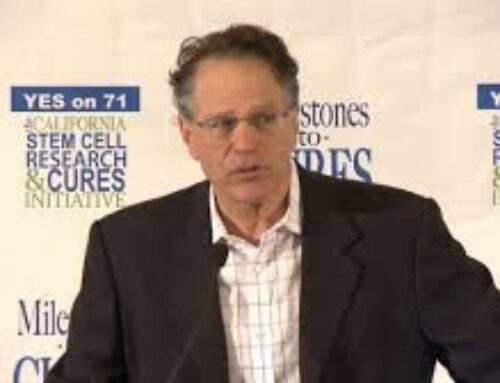The following is a paid advertisement written by a member of Mustang Media Group’s advertising staff.
The Regenerative Medicine era presents us with important decisions about how to fund the research necessary to move the field forward. In 2004, we had Prop 71 here in California, the predecessor for the opportunity we have today with Prop 14. If passed, Prop 14 will authorize $5.5 billion dollars in state general obligation bonds to continue funding grants from the California Institute of Regenerative Medicine (CIRM) to educational, non-profit and private entities for stem cell and other medical research.Voting no will halt all funding from this state source of stable, reliable funding, which is not easily replaced by any other source, including the federal government.
Without the funding from the CIRM, several crucial medical discoveries, including the clinical trial that Cal Poly student Jake Javier is enrolled in right now, will stop moving forward. This is not only detrimental to the patients relying on these trials, but the other patients who could potentially benefit from the findings of the trials down the road.
Jake Javier is a biomedical engineering senior here at Cal Poly. Today, he shares his story:
“On the day before my high school graduation, I was at a friend’s house, swimming in the pool. I was mere weeks away from going down to Cal Poly football’s summer training camp. I was set to study mechanical engineering in the fall of 2016. However, that day, I must have dove out too far, and I hit my head on the bottom of the pool. I immediately felt a shock and numbness ring throughout my body, as I became completely paralyzed from the neck down. After getting emergency neck stabilizing surgery, I was on a ventilator in the ICU for two weeks. About a week in, we received a phone call from a neurosurgeon from Stanford telling us that I could qualify for a stem cell clinical trial. Before this moment, I had only thought of stem cells as a science fiction type of medicine from the future. However, like everything around me at the time, this news was very sudden and very real. After being informed about the trial and its potential benefits — along with the slight chances of adverse effects — we decided to move forward with the treatment.
I received a stem cell treatment 28 days after my initial injury. The next seven months I spent doing intense physical therapy as an inpatient at rehabilitation hospitals. I was originally told to not expect much recovery; I was “the best of the worst.” But through much physical therapy, I was regaining movement thought to be long gone. It was during this time, while I was enrolled in the clinical trial, that I developed a passion for the medical industry. Because it directly affected my recovery, I soaked up all the information that was thrown at me. This led me to change my major from mechanical engineering to biomedical engineering as I deferred an entire year from Cal Poly. As I began to learn what that really entailed, I immediately knew that I was in the right place. From there I’ve joined clubs like QL+ and started projects that center around biomedical engineering. I’ve participated in conferences and advocacy groups for stem cells. I’m hoping to apply to graduate school for neuroengineering after graduating from Cal Poly this coming spring. I truly do not know where I would be without receiving my stem cell treatment, both physically and mentally. All I can say is I would never change it.
Cal Poly has provided me so many opportunities to explore my potential career paths, especially within [biomedical engineering.] Since I’ve arrived here on campus I’ve been able to use campus media outlets and connections to share my story as an advocate for stem cell patients and as a person with a disability. I’ve traveled and spoken at conferences among the world’s smartest scientists and researchers, including Cal Poly [biomedical engineering MS] students. I’ve been able to create ideas and work on projects involving rehabilitation engineering, something very close to my own journey. Specifically, I remember working on all-terrain wheelchairs in a QL+ project for two energetic boys with disabilities, granting them the ability to explore the outside world with their young peers. Even more recently, I have sponsored my own senior project with an idea for a novel medical device involving neuroengineering. I remember approaching multiple professors with this idea and they all gave me their time and attention. I have to give a huge shout out to Dr. Michael Whitt in the [biomedical engineering] department for taking countless hours of his own time, outside of his already tremendous workload, to work with me, as I’ve developed this simple idea into something that could potentially be a start-up. It’s a bit cliched, but the Cal Poly ‘Learn By Doing’ culture has really paid off for me throughout my college experience. I guess in an ironic way I embody the Learn By Doing slogan to a fault!”
Javier is not alone. He is participating in one of more than 90 other clinical trials taking place within the state of California, all either funded by CIRM or based on earlier stage research funded by CIRM. He is a strong supporter of Prop 14, and he hopes his fellow Mustangs will vote yes on Prop 14 on the November ballot.
California State University campuses like Cal Poly are teaching institutions, and students need the advantages of this type of funding from CIRM, like what has been awarded to Cal Poly as part of the CIRM bridges to Stem Cell Research grant program. Dr. Trevor Cardinal is a biomedical engineering professor at Cal Poly. He has been awarded CIRM funds. He and Javier crossed paths academically, and they have not only established a professor-student relationship over the last four years through the biomedical engineering courses, but also through stem cell research conferences and advocacy. Here are some thoughts from Dr. Cardinal on stem cell research, CIRM funding and Prop 14.
How have you been able to teach and lead people to understanding the benefits of stem cell research?
“This question reminds me of when people asked me how I did sales when I worked at CCS in college — I didn’t so much sell surfboards, t-shirts, and shoes, as those products sold themselves. I just tried to be helpful. It’s the same as with stem cell research; the potential of cells that divide nearly limitlessly and can differentiate into any (for pluripotent) or many (for adult) cells of our body ‘sells’ itself as highly attractive candidate therapies for a wide variety of diseases. I have worked with an amazing group of colleagues from across campus (bio sci, chem, animal sci, stats) to provide educational infrastructure, project advising and internship mentoring — the students take it from there to make discoveries, develop processes, optimize procedures and bring the promise of stem cell research closer to reality.”
How has stem cell research impacted you?
“I guess the first thing I would say is that I think of Prop 14 and CIRM as encompassing Regenerative Medicine, not just stem cell research. So I will slightly deflect and answer ‘how Regenerative Medicine has impacted me.’ In a nutshell, it has defined my career. If you think about faculty duties — teaching, research and service, Regenerative Medicine has permeated all of them. I teach graduate courses in it [Cell Transplantation, and have hopes to shift my main undergraduate course to a Regenerative Medicine Focus], I work with students to do research in it [transplanting muscle stem cells to promote vascular growth] and of course I direct the program that trains students to enter it. The interesting thing about it is that I didn’t anticipate Regenerative Medicine having this effect on my career. While I trained in a tissue engineering and regenerative medicine lab as a PhD student, my project was focused primarily on how a vascular regeneration event affects the physiology of blood vessels. When I set up my lab at Poly, I continued that focus on physiology. But that same summer, I also worked with my colleagues to apply for a Bridges to Stem Cell Research grant from CIRM. As the years have gone on, my involvement with the CIRM Bridges Program has slowly and steadily shifted my focus from physiology to Regenerative Medicine — and it’s been amazing. My mentor in grad school encouraged me to always ‘follow the science,’ in other words ‘go with the flow,’ and the ‘flow’ of Regenerative Medicine has been a joy.
Thinking more outwardly, Regenerative Medicine has also graced me with amazing relationships with the academic labs and biotech companies that are at the forefront of this field. It has been awe-inspiring to see companies like ViaCyte progress from promising proof-of-concept to a reasonable chance of curing diabetes. Cell based therapies are already revolutionizing lymphoma treatments, and it is exhilarating in a marathon kind of way to witness the field come to fruition.
Easily though, the greatest impact has been at the intersection of my faculty job and the outside world — watching our students go out into the ‘real’ world and do great things is by far the most rewarding experience. Commencement speakers always tell graduates that they are going to change the world, and it often comes off as cliché, but actually seeing it play out, seeing our students change the world is the best reward I could hope for my professional efforts.”
As we can see, funds from CIRM have had a huge impact on our community, from providing Jake Javier with the opportunity to be in a clinical trial to providing funds for the CIRM Bridges program led by Dr. Cardinal and his colleagues at Cal Poly.
Let’s all vote Yes on 14 to keep this crucial funding intact.







